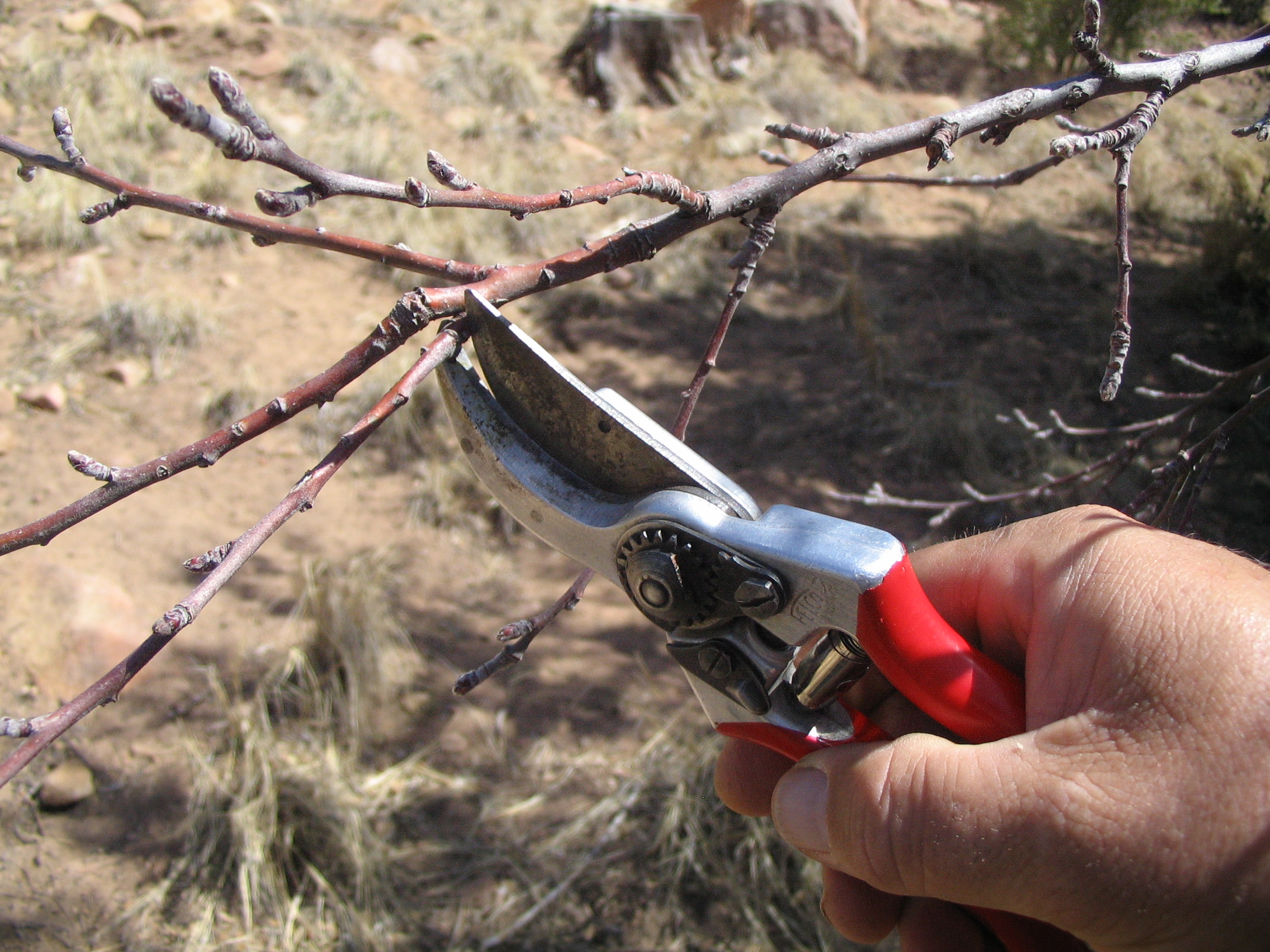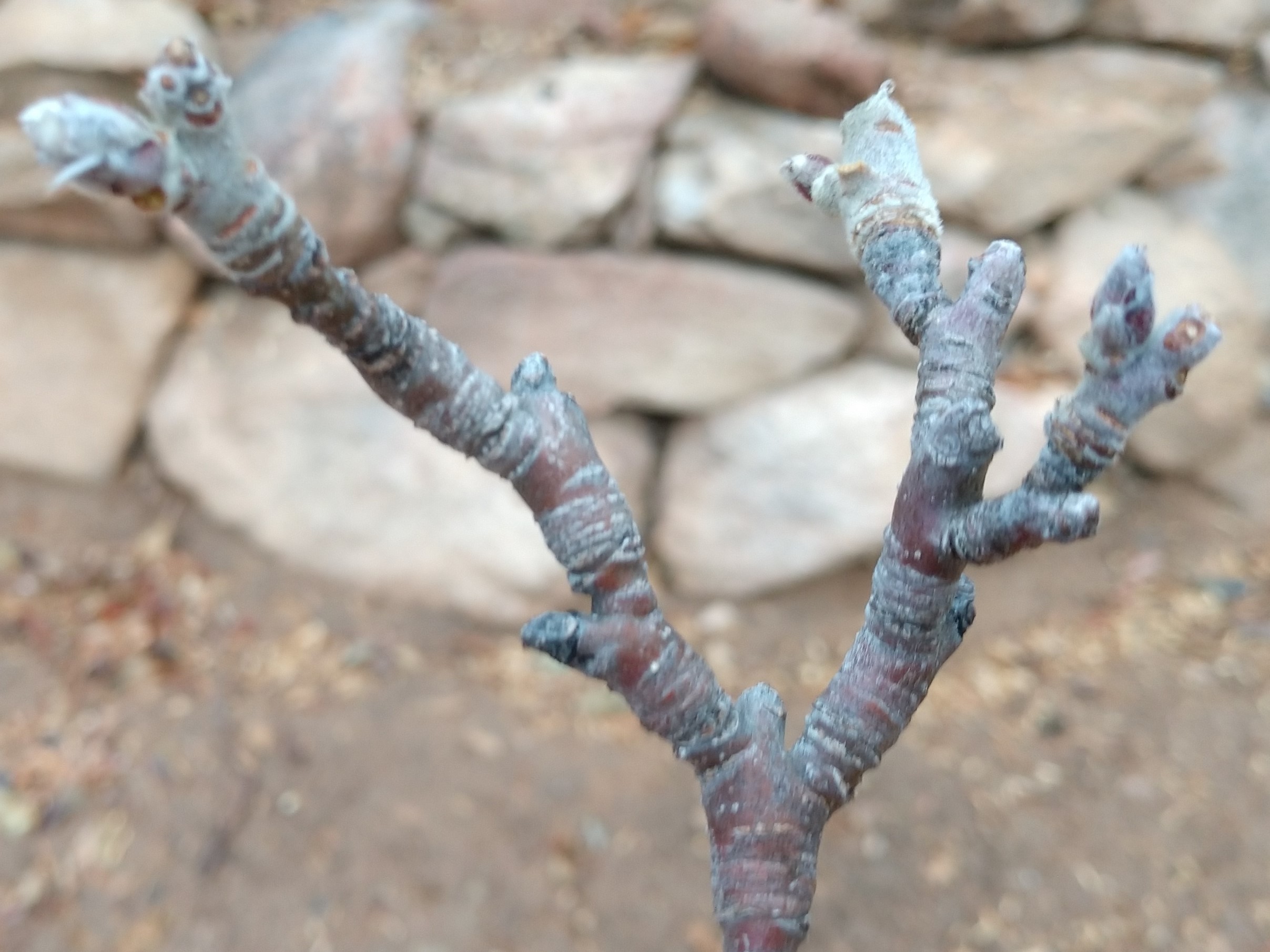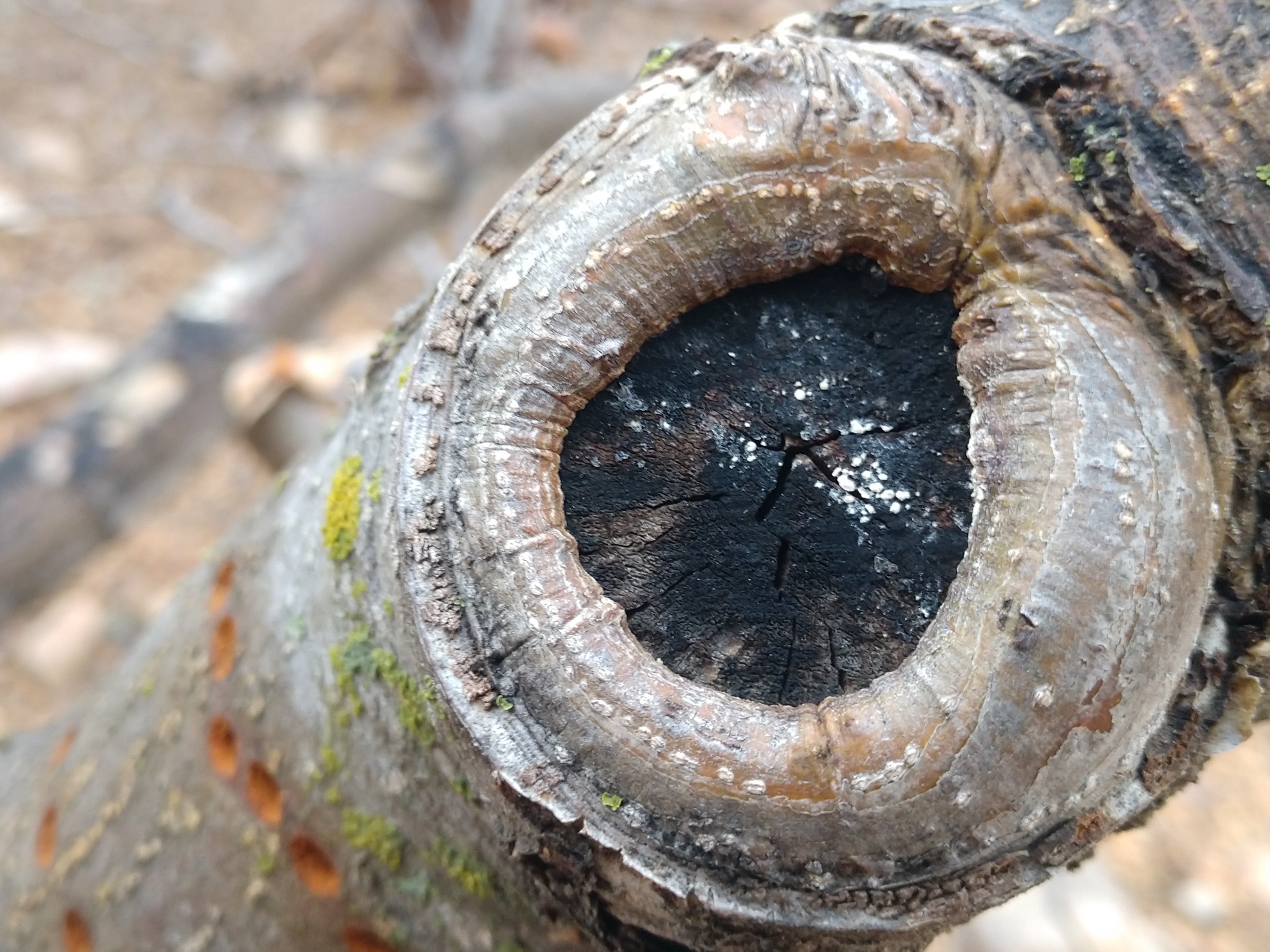 Deciduous Fruit Tree Pruning - January 27, 2021 Jeff Schalau, Agent, Agriculture & Natural Resources University of Arizona Cooperative Extension, Yavapai County North central Arizona is a great place to grow deciduous fruit trees including apples, pears, quince, cherries, peaches, plums, and apricots. Deciduous fruit trees can benefit from yearly pruning throughout their productive lifespan. There are multiple approaches, most of which are valid and dependent on individual preferences and available space. Each tree has also has individual characteristics that make it difficult to generalize. Due to University of Arizona COVID-19 Reentry Guidelines, I will not be able to provide face-to-face pruning workshops as in the past. Instead, I’ll do my best to provide theoretical information here and also provide you with some helpful resources linked below. Pruning can help maintain deciduous fruit tree health and productivity. Pruning also creates a desirable structure for supporting the fruit crop and can keep the tree a more manageable size. Winter pruning often causes a tree to respond vigorously when large limbs are removed. Conversely, summer pruning does not cause as drastic a growth response and is often used to remove selected branches without initiating as much regrowth. Larger scale fruit growers prefer trees apple and pear trees trained to a “central leader”. This strategy requires removal of selected branches from the trunk while leaving behind strategically spaced side branches (called scaffold branches). Conversely, “open-center” (also called “vase-shaped”) pruning removes the central leader at a very young age (preferably right after planting) to develop a tree that spreads outward from the trunk allowing light to penetrate and air to circulate in the center of the tree. Open-center pruning is often used for stone fruits (peaches, nectarines, plums, and apricots). I also prune my apple trees to an open center which keeps them shorter and easier to thin excessive fruit and harvest. Pears often have an upright growth habit that precludes open center pruning. All trees, whether fruit or ornamental, should be pruned to remove crossing and inwardly growing branches. Dead and diseased wood should also be removed. Sometimes fruit trees have been neglected and require extensive pruning. In these cases, I recommend addressing the most crucial problems first and leaving the less important issues for summer or next year. As a general rule, you should not remove more than one-third of the live canopy in any given year. Most apples and pears produce fruit on spurs: shortened twigs where flowers are produced. These spurs usually become productive at 3 years and can produce for 10 or more years. Plums, apricots, and cherries produce fruit on shorter-lived spurs. Peaches and nectarines produce fruit predominantly on the previous year’s growth. This is critical when planning your pruning strategy for each of these species. In general, peaches and nectarines should be pruned more aggressively than the others to produce the desired quantity and quality of fruit bearing wood for the following year. Large pruning cuts should be kept to a minimum. These cuts take longer to heal and will often result in water sprouts (vigorous vegetative shoots) that sprout adjacent to large pruning wounds the following growing season. If you make large cuts, do not use a pruning sealant to cover the wound. Simply allow the cut surface to callous over naturally. Finally, use only clean, sharp pruning tools. Soak the loppers and hand pruners in isopropyl alcohol (or an antibacterial/antiviral disinfectant solution) for 5 to 10 minutes between trees and especially after pruning diseased material. It is difficult to reduce the height and spread size of a mature fruit tree. Resist the urge to shorten your tree by giving it a “haircut” across the top of the canopy. This results in all the newly cut branches vigorously regrowing and creating a more tangled canopy which will likely grow taller than it was prior to pruning. You may try to reduce tree height by selectively removing the tallest limbs to the point where they originate and to limit pruning to 1/3 (or less) of entire canopy each year. Several years ago, some Master Gardener volunteers and I created four YouTube videos that describe and demonstrate deciduous fruit tree pruning principles and techniques. There is also a short video discussing pruning tools, sanitation, and safety. All videos are linked below as well as photos and relevant publications. You can follow the Backyard Gardener on Twitter – use the link on the BYG website. If you have other gardening questions, email the Master Gardener Help Desk in Prescott (prescottmg@gmail.com) or Camp Verde (verdevalleymg@gmail.com) and be sure to include your name, location, and phone number. Find past Backyard Gardener columns or provide feedback at the Backyard Gardener web site: https://cals.arizona.edu/yavapai/anr/hort/byg/. Images  Deciduous fruit trees can be kept to a manageable size with periodic pruning (Photo by Jeff Schalau, University of Arizona).
Deciduous fruit trees can be kept to a manageable size with periodic pruning (Photo by Jeff Schalau, University of Arizona). Many apple and pear varieties produce fruit on spurs. This is where flowers/fruit appear and these shortened stems can be productive for many years (Photo by Jeff Schalau, University of Arizona).
Many apple and pear varieties produce fruit on spurs. This is where flowers/fruit appear and these shortened stems can be productive for many years (Photo by Jeff Schalau, University of Arizona). Pruning wounds will recover as callous tissue regrows from the cambium. Pruning sealers/paint hinder this process and should not be used (Photo by Jeff Schalau, University of Arizona).
Pruning wounds will recover as callous tissue regrows from the cambium. Pruning sealers/paint hinder this process and should not be used (Photo by Jeff Schalau, University of Arizona).Additional Resources Backyard Fruit Tree Production at Elevations 3500 to 6000 Feet, University of Arizona Cooperative Extension extension.arizona.edu/sites/extension.arizona.edu/files/pubs/az1162-2015.pdf Training and Pruning Newly Planted Deciduous Fruit Trees, University of Arizona Cooperative Extension extension.arizona.edu/sites/extension.arizona.edu/files/pubs/az1668-2015.pdf Deciduous Fruit Tree Pruning Videos, University of Arizona Cooperative Extension, Yavapai County cals.arizona.edu/yavapai/pruning/videos.html Tree Pruning Basics, Oregon State University Extension Service extension.oregonstate.edu/crop-production/fruit-trees/tree-pruning-basics Pruning Tree Fruit – The Basics, Washington State University Extension extension.wsu.edu/maritimefruit/pruning-tree-fruit-the-basics/ |